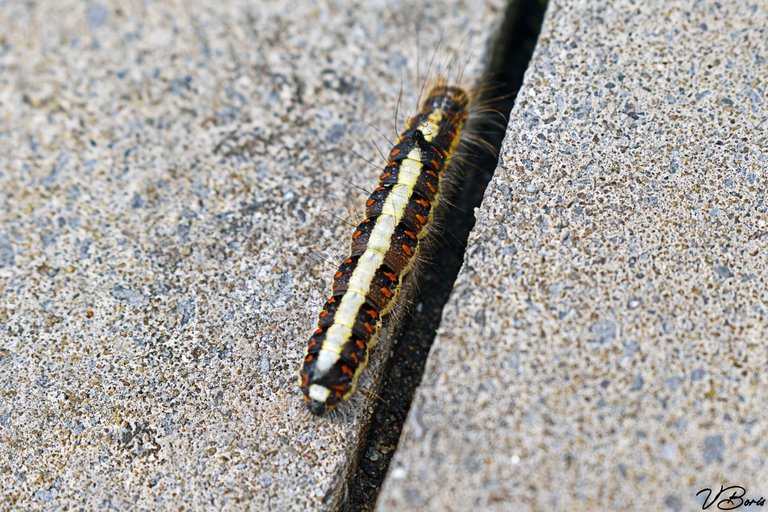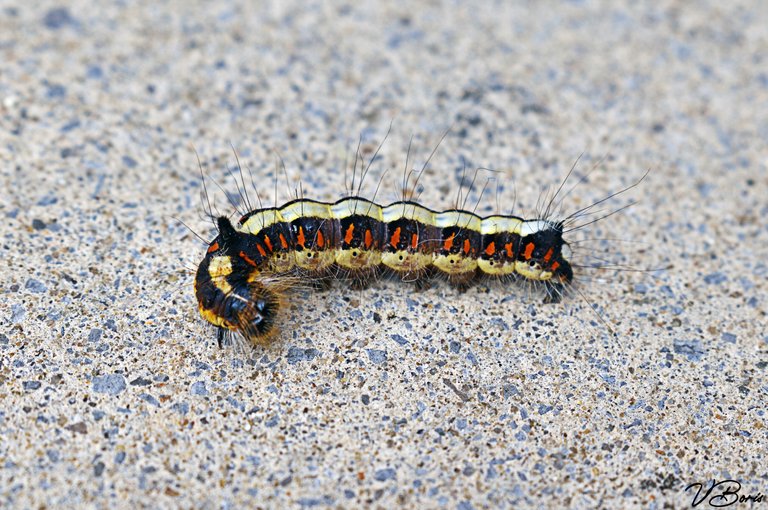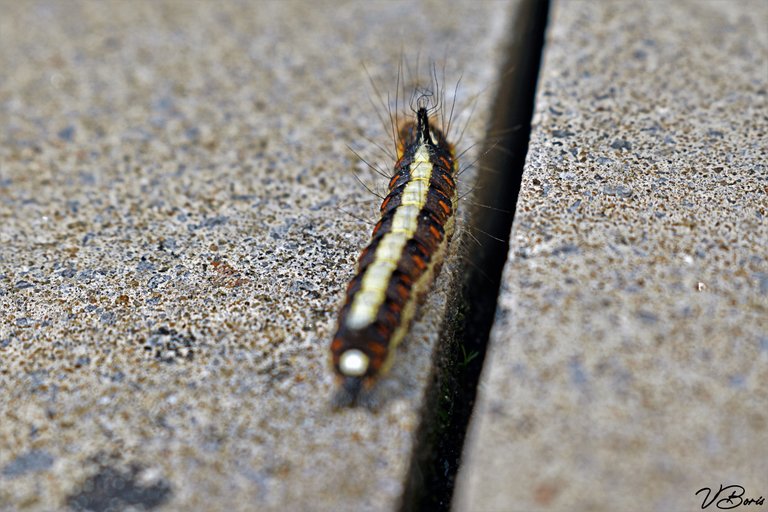Caterpillars are everywhere, literally everywhere. They're getting ready to feast and get themselves prepared for the big transition. That said, many have already transitioned into a butterfly or a moth.
Most of the caterpillars that I've come across this year were tiny, but not this one, the one that I'm about to show you is a bit bigger, almost a size of my pinkie finger. And above all, the colours on it as well as that hair sticking up is nothing short of looking impressive! Funny enough, the place I've spotted these particular larvae was right outside the kitchen/garden door as it was making its way towards one of my 3 apple trees in the garden (or so I presume).
I'll be honest with you, it took me forever to find out which of a million possible caterpillars this one is, and to my relief, I think I've got it right. So, the caterpillar in question is the one that will eventually develop in to a big sized moth called Grey Dagger or its Latin name, Acronicta psi. As you can see there's nothing grey about this caterpillar and the name only comes to its proper function when after a transition a moth appears, which is grey. Sadly, I'm unable to present to you an actual photograph of a moth, which this kind of caterpillar turns in to.
Grey Dagger caterpillars are scattered all over the UK and will thus be a big possibility for you to spot one sooner rather than later. This, believe it or not, is my first time ever to spot Grey Dagger larvae, but it wouldn't have been the case for seeing Grey Dagger moth.


The bright red and yellow larvae with a primary black colour have a tall black hump on the back, close to the head. Reminds me a bit of dagger even before being called a dagger when a moth. Best time to spot one is somewhere between July and October or November. That said, others would say that you can only spot them in a narrower time frame, from June until the end of August.


After a little online research about the caterpillar in mind, I've come to a conclusion that my garden is very decent in value for it to get as much food as needed. There's quite a range of broadleaved trees and shrubs included in caterpillar's diet, with some known plant species, such as Blackthorn, Hawthorns, Apple birches, sweet Chestnut, elms and even Rowan as well as limes, which aren't as available around here as the others are.


INTERESTING FACT:
When the time is right and Grey Dagger moth appears out from the cocoon, they'll have a wingspan between 35 - 45mm, which is quite big for a moth. Grey Dagger moth got its name after black lines on its wings resembling the shape of a dagger or in this case many daggers.
All of the photos included in this article are mine.
Thanks for stopping by and take care.
A beautiful caterpillar. But also the moth is enchanting with its black markings on the upper side of its wings.

Couldn't agree more! Nicely visible daggers on this moth's wings.
Thanks for sharing 🙂
Congratulations @vraba! You have completed the following achievement on the Hive blockchain and have been rewarded with new badge(s) :
You can view your badges on your board And compare to others on the Ranking
If you no longer want to receive notifications, reply to this comment with the word
STOPTo support your work, I also upvoted your post!
Do not miss the last post from @hivebuzz: